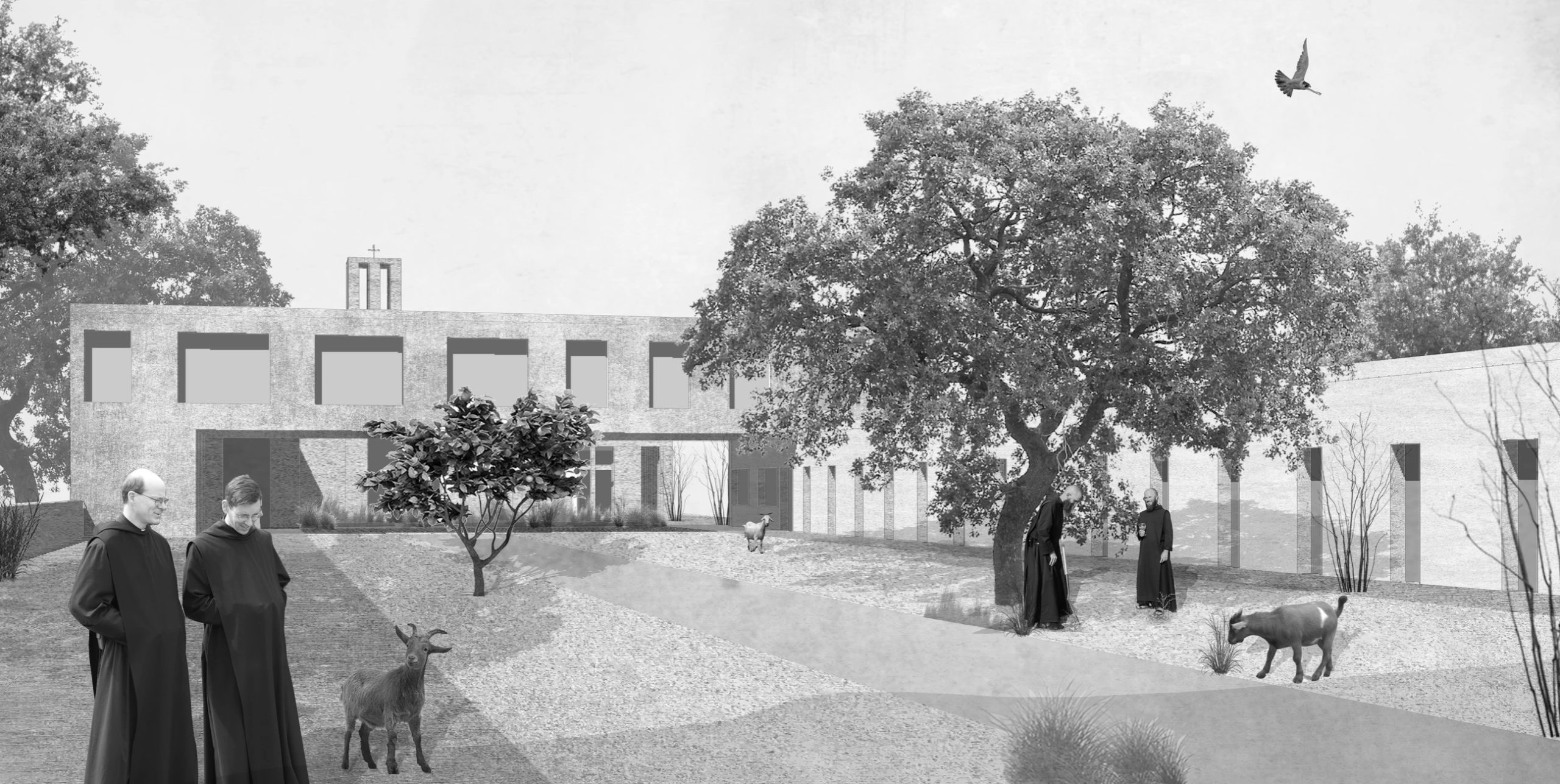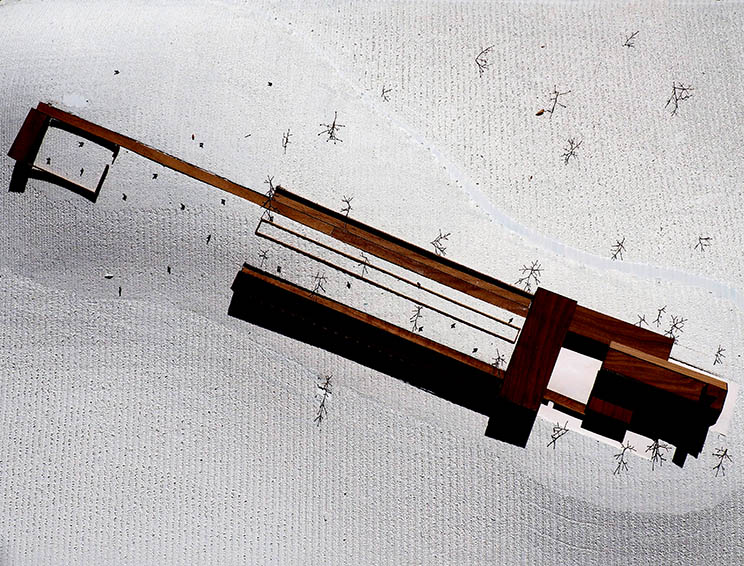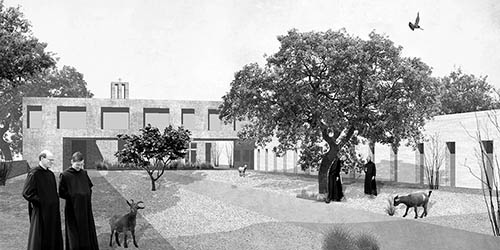STUDENT WORK AWARD
Julia Martinelli
Wimberley, Texas
This contemporary monastery focuses on the relationship of solitude to community, and publicity to privacy. The Camaldolese Benedictine monks characterize a form of monasticism described not only by reclusion, reflection, isolation, and prayer but by immersion in community life and social service. The design program includes a church, cloister, private chapel, offices, library, refectory, communal kitchen, 24 monk cells, a small public event space, and space for work activity that enables the community to generate income for operations.
The design is focused on the daily routine and interactions of the monks both in seclusion and with each other and caring for livestock. The daily rhythm of “praying without ceasing” is interspersed by hard manual work and labor. Raising and tending the animals requires structure, stability, dedication, and living in solidarity, traits encouraged by the community of monks. There is a small facility for producing goat milk and cheese to sell to the local community. Different spaces include gardens, public spaces of the church, monks quarters, and animal pens. The program is stretched across the sloping site with goats at the highest point, aligned with the church tower. Because the monastery is located on a high point, the goats and tower are most visible–representing community, inclusivity, and monastic life.
Jury Comments
This design for a monastery, a place that most would associate with isolation, creates a dynamic connection to the community, offering the fruits of labor to the community. The design enhances the engagement. The ensemble of buildings relates to the landscape, creating an opening outdoor room. It’s very sensitive place-making, and the project is beautifully rendered.









